When visiting Iceland you will find contrasting landscapes including rugged mountains, craggy volcanoes and icy glaciers. The time of year that you visit will determine which side of the island you see.
If you choose to visit in winter, the terrain will be dusted over with white, with most of the peaks showing snow-capped tops. When visiting in summer, the land is greener with flowers blooming throughout the country.
Being home to some of the most breathtaking scenery in the world, Iceland is a must-visit for any outdoor enthusiast. Its interesting rock formations, impressive waterfalls and enormous rivers will impress even the most experienced adventurer.
One of Iceland’s most prominent attractions is its glaciers. These are huge rivers of ice that form when the snow has settled in one place, this then becomes compressed to create the natural formation of glaciers.
If you’re planning a trip to Iceland, you’re likely wondering how to visit these impressive structures. We have put together a list below of everything you need to know about Iceland’s glaciers, the best spots to visit and how to get to them.
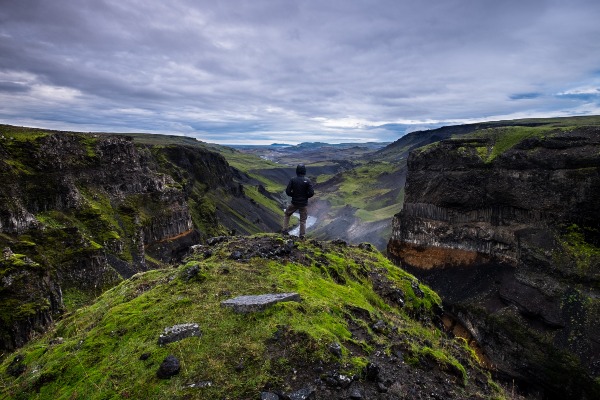
What is The Biggest Glacier in Iceland?
When deciding to visit Iceland, you’re probably already aware of the breathtaking array of glaciers around the island. However, if you’re seeking the biggest in the country, we’ve got you covered.
Vatnajokull is not only the biggest glacier in Iceland but also the largest glacial mass in Europe. The gigantic ice formation covers an impressive 8,000 square kilometres, creating a sight that only this wonderful country has to offer.
Vatnajokull glacier is mostly accessible for visitors to hike around its beautiful natural landscapes. It is situated in the Vatnajokull National Park, which covers an impressive 13% of Iceland.
This is one site not to be missed when visiting this beautiful Nordic country. Not only will you be blown away by the sheer beauty this glacier offers, but the scenery that encompasses it is also an incredible sight to see.
Can you Hike Glaciers in Iceland?
With 269 named glaciers in Iceland, you will find them at every twist and turn, making this the perfect country to go to get up close with these impressive ice formations. Many people head here to walk on the glaciers, which provides an unmatched experience.
It is safe to walk on glaciers in Iceland, but special equipment is essential. Due to the icy terrain and rugged conditions, walking on glaciers is also best done with a knowledgeable guide, who will help keep you safe whilst navigating you through the dramatic ground.
There are several glaciers in Iceland that you can enjoy walking on, with some of the most popular including Myrdalsjokull and Solgeimajokull. It is worth noting that there are many things to consider when deciding to hike a glacier, such as weather conditions, time of year, experience and equipment.
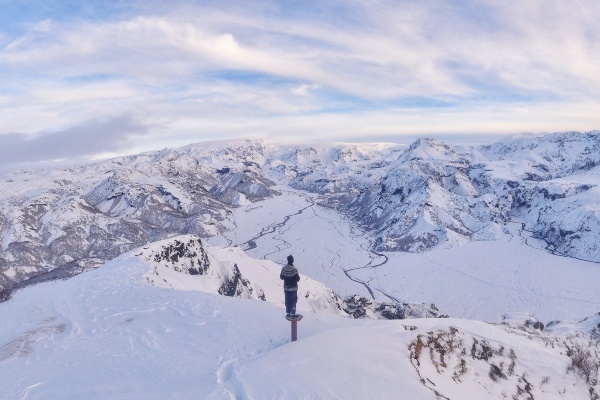
Where to See Glaciers in Iceland
As previously mentioned, glaciers are scattered throughout Iceland, with around 10% of the country’s landscape being made up of these ice formations. When seeking where to see glaciers in Iceland, you will find the largest in the central and southern parts of the country.
The Skaftafell, part of the vast Vatnajökull National Park is where the majority of tourists go to catch a glimpse of the incredible glaciers. Although, you will find others hidden away throughout the island, perfect if you want to enjoy the country’s great outdoors with fewer people.
If you’re seeking a trip to Iceland to see the best of its glacial offering, keep reading as we have put together a list below of ones not to be missed in this stunning part of Europe.
Skaftafell National Park
Situated in southern Iceland, Skaftafell is a must-visit place for any lovers of the great outdoors. With glacier trekking, hiking, ice caves to explore and breathtaking waterfalls, you could spend days here just marvelling over the country’s many natural beauties.
One of the most popular places to go in Iceland is Skaftafell National Park. Here you don’t only get the chance to see Europe’s biggest national park and largest glacier, but the drive to the park displays some of Iceland’s most spectacular scenery.
You will find yourself surrounded by lush greenery at Skaftafell, alongside unique glaciers and rugged peaks. Explore the national park, get up and close with Vatnajokull and spend some time taking in the vast landscape that Skaftafell has to offer. It is also possible to drive to Skaftafell to see the glacier of Vatnajokull, with many heading here from Reykjavik, a drive that takes approximately 4 hours.
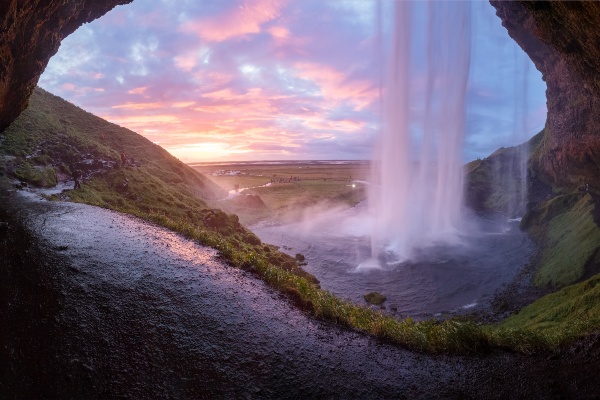
Hofsjökull Glacier
Hofsjökull is Iceland’s third-largest glacier and is situated in the Icelandic Highlands. Being in such a remote position does make this glacier particularly difficult to get to. With rugged terrain and hair-pin bend roads, Hofsjökull is only really accessible during the summer, when it is safest to visit.
If you do decide to go to Hofsjökull, you will be utterly amazed at the beauty that lies here. This part of Iceland has the largest active volcano in the country and its position in the western highlands allow for landscapes full of rocky peaks and raw nature.
When in the area, you are also in the perfect position to explore the north mountain range of Kerlingarfjoll which sits between the two largest and most famous glaciers in Iceland.
Drangajokull Glacier
Drangajokull is the northernmost glacier in Iceland, situated southwest of the Hornstrandir Peninsula. Its location makes it another remote place to visit, as it is particularly isolated in the Westfjords region. The glacier stretches over 160-200 square kilometres, providing an extensive area to explore.
As Drangajokull is the only glacier in Iceland that doesn’t exceed 1000m (with an altitude of 925m) it hasn’t surrendered to receding over the years. Unlike many of the other glaciers in the country, it has retained its size despite global warming, making Drangajokull the fifth largest glacier in Iceland.
Similar to the Hofsjökull glacier, Drangajokull is safer to visit during the summer season when the roads aren’t so treacherous. Its rural location experiences the harshest of Iceland’s weather, making it difficult to reach for those who aren’t prepared or experienced in travelling in these conditions.
For those deciding to visit Drangajokull, the nature reserve of Hornstrandir is located nearby and is certainly worth a visit. The vast natural landscapes, dramatic scenery and remote location make it a particularly appealing part of the country to see.
Jökulsárlón Glacial Lagoon
The Jokulsarlon Glacial Lagoon borders Vatnajokull National Park, making it easy to access both if you’re in the area. This is one of Iceland’s most iconic sights and is one not to be missed when visiting this beautiful country.
The glacial lagoon is made up of mirror-like water with icebergs dotted along the surface. As the lagoon runs into the Atlantic Ocean, chunks of ice are left behind on the black volcanic shoreline, which is a sight that can’t be missed when seeking out Iceland’s best glaciers.
One of the best things about visiting Jokulsarlon is that it sits on one of the most popular roads around Iceland, making it easy to navigate in most weather conditions. If you happen to be travelling on Iceland’s ring road, you can access the glacial lagoon from here, with the journey taking around 5 hours in total.
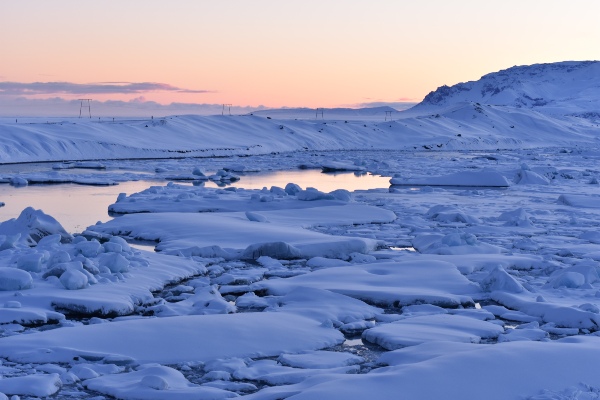
Mýrdalsjökull Glacier and Eyjafjallajökull Glacier
We have put Mýrdalsjökull and Eyjafjallajökull glaciers together as they are situated right next to each other, making it easy to see both impressive formations at once. They are located in the north of Vik with the Fimmvorouhals pass running through the middle, providing a stunning landscape for all to enjoy.
Mýrdalsjökull currently sits as the fourth-largest glacier in Iceland, while Eyjafjallajökull is the sixth-largest. Visiting these glaciers not only provides the perfect opportunity to see two at the same time, but they are also both home to impressive volcanoes. The volcano located on Mýrdalsjökull is one of the country’s most active and largest, whilst the one on Eyjafjallajökull erupted in 2010.
Mýrdalsjökull and Eyjafjallajökull are located approximately 93 miles from the capital city Reykjavik and just north of the beautiful village of Vik. This makes them both relatively easy to access by car.
Snaefellsjokull Glacier
Snaefellsjokull is situated in the Snaefellsjokull National Park, right outside Reykjavik, making this an accessible glacier for those visiting by car. This 700,000-year-old stratovolcano is capped by one of Iceland’s best glaciers.
Although it isn’t the largest glacier in the country, that doesn’t mean it’s not the most popular. Being so close to the capital makes it the perfect place for those who don’t have access to a 4WD or don’t feel comfortable driving on Icelandic roads.
However, visiting Snaefellsjokull by 2 wheel-drive is fine to do during the summer, but when the harsher winter conditions come, visitors will need a 4-wheel drive to see the glacier. Alternatively, on a clear day, it can be seen from the city of Reykjavik as it towers in the backdrop.
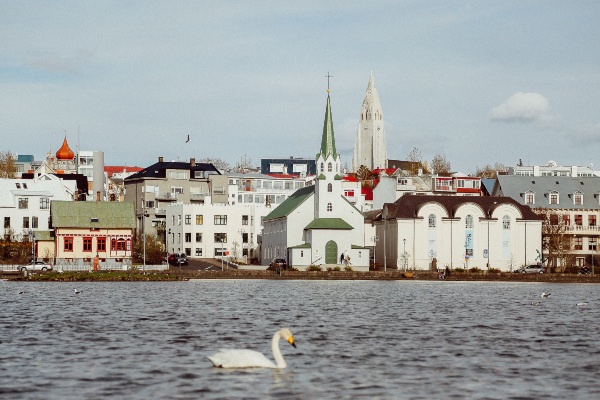
Sólheimajökull Glacier
Sólheimajökull is located in southern Iceland, perched between the volcanoes of Katla and Eyjafjallajökull. This is a particularly interesting sight to see, as it is part of the much larger Mýrdalsjökull Glacier, making it a favoured spot for many seeking the best of Iceland’s glaciers.
For those hoping to hike on a glacier, you can certainly do so when visiting Sólheimajökull. Many visitors go here to enjoy the ice hiking and climbing, alongside the spectacular rugged landscapes and mighty Mýrdalsjökull close by.
If you’re hoping to visit Sólheimajökull by car, it is fairly easy to do so. When following Route 1 along Iceland’s southern coast, you can stop off to see this magnificent glacier along the way. It can also be reached by a 2-wheel-drive during summer, but a 4-wheel-drive is needed in winter.
There are also many other things to do when visiting Sólheimajökull. With ice caves and tunnels to explore and tour guides to teach you more about the area, you can spend a whole day exploring Iceland’s incredible outdoors.
Top Tips for Seeing Iceland’s Glaciers
There are a few more things to consider before deciding to head off and see Iceland’s glaciers. Things like the time of year to visit, how to get around the island and what to pack are all things you should bear in mind.
When deciding on the best time to go to Iceland for glaciers, we would recommend a trip in the summer. This way, you don’t have to worry about icy roads and dangerous weather conditions, especially if you’re not used to driving in the country.
With a milder climate, a visit in summer will also allow you to see more of the glaciers on the island. If you happen to visit in winter, you will find yourself restricted due to icy roads and health risks in the more remote parts of Iceland.
It is important to plan ahead of time when visiting Iceland and considering transportation is a must. If you plan to visit a number of the country’s glaciers, you will need to make sure you have access to them. Many tourists choose to hire a rental car or 4WD, this allows them to self-drive around Iceland to witness all that this stunning island has to offer.
Knowing what to pack is something else you should consider. With harsh winters and mild summers, appropriate clothing is essential. Make sure you pack layers, waterproofs and good walking shoes. The weather can be unpredictable, so it is always best to prepare for all types of climates.

Summary
We hope that after reading our guide to driving to the glaciers in Iceland, you can now visit with all this information in mind. There are so many natural wonders that this country has to offer, you will be blown away by the impressive landscapes, scenery and raw beauty that lies here. No matter where you decide to go, you will be met with an island full of untouched nature and breathtaking surroundings.
If you’re planning a trip to Iceland to make the most of its glacial offering, you’re likely in need of transport. Take a look at our fantastic range of vehicles available to rent for all kinds of holidays in Iceland.